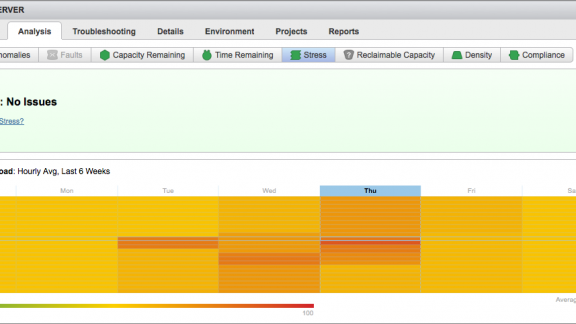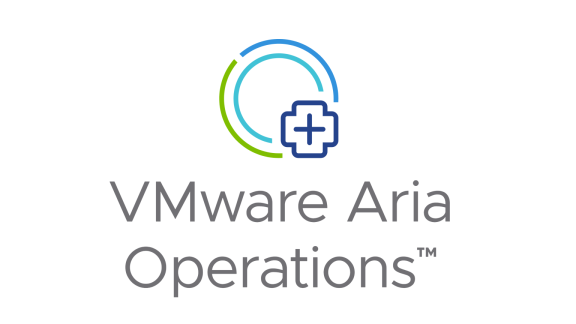By Bekah Suttner, Blue Medora
Database administrators (DBAs) can spend countless hours chasing down the root cause of slowdowns within their database landscapes. While many monitoring platforms help significantly reduce this downtime, communication between teams can still force DBAs to spend a significant amount of time working on the problems in their environment. With VMware vRealize Operations (vROps) informing multiple teams about database issues, DBAs and virtual administrators can eliminate slowdowns faster than ever before. Using the Management Pack for Microsoft SQL Server, we will discuss the tools in vROps designed to eliminate slowdowns in database environments.

Figure 1 – Stress badge on a Microsoft SQL Server instance
Badges in vROps provide powerful analysis and intelligent insight into the health of environments. These badges collect specific metrics and use them to calculate key information on environment health. Figure 1 shows the different badges available in vROps, where we are currently selecting the stress badge.
The stress badge, seen in Figure 1, helps to prevent slowdowns. On the Stress Breakdown table in Figure 2, we see vROps predict that our server will become stressed at workloads above 70%. This tells us that we want to keep our server under 70% workload for optimal performance.
We see that our Business Week Workload is showing points of moderate to high stress in Figure 1. This indicates that our server is reaching points of stress throughout the workday, which could eventually lead to slowdowns in the environment.
While our Business Week Workload was indicating points of stress throughout the week, the green stress badge at the top indicates no stress. The stress badge is indicating the percent of stress zone area occupied over a specified time period, in this case 30 days.
To investigate this further, we can navigate down the page and see which metrics affect the stress badge. In Figure 2, we can see these metrics by expanding the Stress Breakdown table to view our stress trend over the past 30 days. This allows us to find out why the stress badge is not showing any indication of stress.
 Figure 2 – Stress breakdown of a Microsoft SQL Server instance
Figure 2 – Stress breakdown of a Microsoft SQL Server instance
Figure 2 indicates our stress by connection limit, CPU demand, memory usage, and disk capacity. The light blue lines indicate what is happening in our system, the dark blue lines indicate the vROps recommended size for each, and the black line indicates the total capacity of each metric.
The stress badge uses advanced analytics to track chronic stress in Microsoft SQL Server environments. Because the breakdown in Figure 2 shows only spikes of stress, vROps does not indicate heavy stress on our server over the past 30 days, causing the green stress badge. This intelligent monitoring prevents false alarms regarding database stress and provides administrators with accurate information on their overall SQL Server workload efficiency.
For more information on VMware vRealize Operations, visit the product page on the VMware Solution Exchange. Find out more about the Management Pack for Microsoft SQL Server by visiting the product page at Blue Medora and keep up with the VMware Cloud Management blog for more insight into VMware cloud management products.










